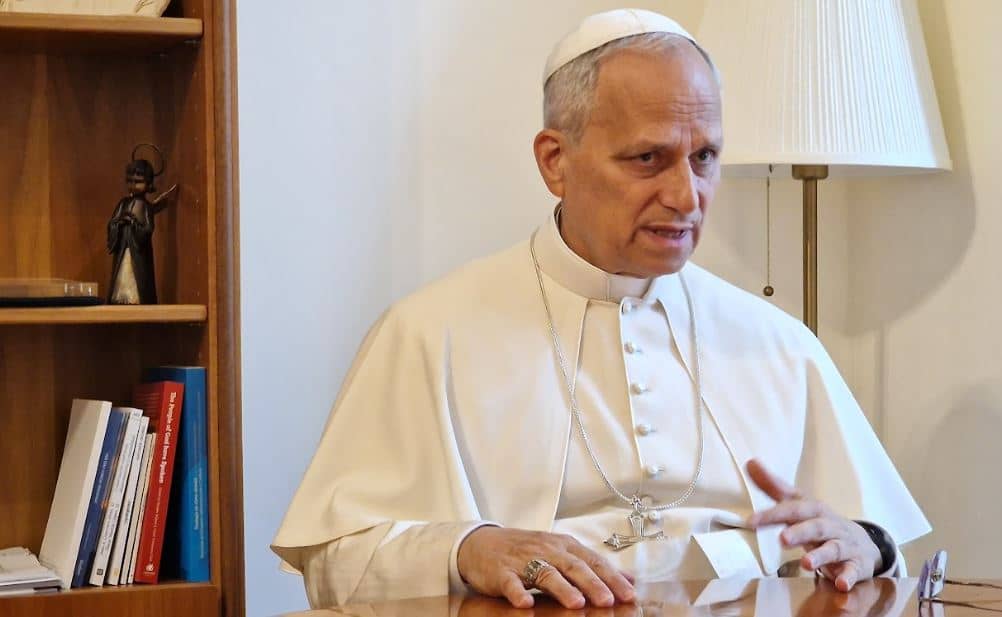[Editor’s Note: Justin Menno has a PhD in moral theology from the University of Dayton and is currently an instructor of theology at Catholic Central High School in Grand Rapids, Michigan. He writes about issues pertaining to law and Catholic moral theology, and he is especially focused on how the legal treatment of the dead informs the moral and legal recognition of the living. He spoke to Charles Camosy.]
Camosy: We were recently at a conference together where you presented on what the history of the civil rights struggle can teach us about the prudential use of law – especially when it comes to prenatal justice. Can you say more about this? Particularly in light of the major Dobbs Supreme Court case coming up?
Menno: I think the history of the civil rights struggle can teach us a lot about the prudential use of law. And I think that NAACP’s decades-long campaign against the legal regime of Plessy is an excellent case in point. The NAACP did not try to outflank this regime through overly clever legal maneuvers. And nor did they try to overcome it with a single direct blow. Instead, through a series of court cases, the NAACP exploited internal tensions with the text of Plessy to weaken the constitutional plausibility of Plessy. In short, the NAACP used Plessy to undermine Plessy.
In light of reading some of the briefs in the upcoming Dobbs case, it seems pretty clear that many pro-life legal organizations are attempting to do something similar with Roe and Casey. That is, it seems pretty clear that they are attempting to exploit internal tensions within the texts of Roe and Casey to weaken the constitutional plausibility of each.
To be clear, the upcoming Dobbs case is not a direct challenge to the constitutional merits of Roe and Casey, at least on the surface. The case is supposed to consider the specific question of whether all bans on pre-viability abortions are unconstitutional. Thus, it is a challenge to the scope of Roe and Casey, and especially to the controlling plurality opinion of Casey. Nonetheless, just as the NAACP’s test of Plessy’s scope implicated questions about Plessy’s constitutional merits, the same dynamic seems to be in play in the upcoming Dobbs case in reference to Roe and Casey.
In the period of Jim Crowism – or the period under the Plessy legal regime – did Catholics – or Catholic moral theologians – endorse a particular legal strategy?
The short answer is no. On the whole, in the effort to challenge legalized segregation, Catholic commentators did not spend a lot of time debating whether to use incrementalist approaches or direct confrontation approaches. But it is very apparent that they applauded any and all legal victories, no matter how big or small, that weakened Plessy.
For example, the editors at the Interracial Review, a Jesuit-run journal, reported on almost every Supreme Court case that challenged the legal regime of Plessy from the Gaines decision in 1938 through the historic victory in Brown in 1954. And it is apparent from their coverage that they endorsed legal challenges to this regime as a right and necessary remedy to the grave injustice of segregation.
Were there any theologians that argued that Catholics, in the effort to combat segregation, should refrain from efforts to overturn or even weaken Plessy?
It is difficult to find any. Some Catholic commentators worried about the social effects of laws aimed at combating segregation. Specifically, some worried about whether and to what degree laws against segregation would be resisted through legal loopholes or refractory attitudes or active hostility.
But I can’t find any Catholic commentator or moral theologian who categorically stated that it was prudent for Catholics to refrain from legal efforts to combat segregation.
So, what did these theologians think about social policy and legal remedies to segregation?
In brief, they thought they should be intertwined. And the historical record is pretty clear on this point.
To return to the Interracial Review, the editors and authors of this journal certainly championed legal challenges to the Plessy regime. But so too did they champion social policy challenges to this regime in areas like education, employment, housing, transport, and public accommodations just to name a few. To cite but one example, in the effort to prevent racial discrimination in defense contracting and federal employment, the editors campaigned at length for the establishment of Roosevelt’s Federal Employment Practices Committee (FEPC).
Were there any legal policies or fights that they emphasized?
Yes, of all the legal policies that they focused on, the editors of the Interracial Review most strongly emphasized the need for federal anti-lynching legislation. In fact, it was, far and away, the most frequently raised subject in editorials throughout the 1930s and 1940s. In support, the editors drew on a range of arguments from the Catholic moral tradition, American constitutional jurisprudence, and then emergent human rights discourse. And they matched these arguments with a similarly sharpened rhetoric.
In the effort to fight the grave social injustices of segregation, the editors thus made clear that legal remedies were not just right and necessary for areas offensive to human dignity and flourishing, but especially so for those hostile to human life.
What are some lessons for the current pro-life movement or new prolife movement ahead?
That law and social policy must be intertwined. I know that some think these two areas can be delinked. And some even think that should be delinked on the grounds of expedient political strategy. But I don’t find either position persuasive. If anything, the historical witness of Catholic commentators like those at the Interracial Review seem to provide compelling warrants for the rightness of advancing justice for all through law and social policy.
















